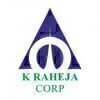
CBRE
Proud winner of ABECA 2024 - AmbitionBox Employee Choice Awards
Filter interviews by
CBRE Project Manager Civil Interview Questions and Answers
CBRE Project Manager Civil Interview Experiences
1 interview found
(2 Questions)
- Q1. Tell me about your experience?
- Q2. What salary you expect from us ?
Project Manager Civil Jobs at CBRE
Interview questions from similar companies

(2 Questions)
- Q1. Pressure in fire hydrant pipe
- Ans.
Pressure in fire hydrant pipe is determined by factors like water flow rate, pipe diameter, and elevation difference.
Pressure in fire hydrant pipe is directly related to the flow rate of water through the pipe.
The diameter of the pipe also affects the pressure, with larger diameter pipes resulting in lower pressure loss.
Elevation difference between the hydrant and the point of discharge can impact the pressure in the p...
- Q2. What is NRC full form
- Ans.
NRC stands for National Register of Citizens.
NRC is a register containing names of all genuine Indian citizens in the state of Assam, India.
It was first prepared in 1951 and is now being updated to identify illegal immigrants.
The NRC process involves verifying the citizenship status of individuals based on documents like birth certificates, land records, etc.

I applied via Walk-in and was interviewed in Aug 2024. There were 2 interview rounds.
General knowledge skills
(5 Questions)
- Q1. Your previous company experience
- Ans.
Worked as a Project Engineer at a construction company for 5 years.
Managed multiple civil engineering projects simultaneously
Coordinated with architects, contractors, and clients to ensure project success
Performed site inspections and quality control checks
Prepared project schedules and budgets
Resolved any issues or conflicts that arose during construction
- Q2. Asking your previous work experience
- Q3. Structure related questions
- Q4. Finishing related question
- Q5. Water proofing related question and Bbs
Interview Preparation Tips

Senior Civil Engineer Interview Questions & Answers
Cushman & Wakefieldposted on 24 Aug 2024
(1 Question)
- Q1. About your self


(1 Question)
- Q1. Salary expectation they asked
(1 Question)
- Q1. Technical questions they asked
Interview Preparation Tips


(1 Question)
- Q1. Normal question about your experience and profile
(1 Question)
- Q1. After hr interview they forward to you for technical round
Interview Preparation Tips

Civil Engineer Interview Questions & Answers
Gleeds Hooloomann Consultingposted on 4 May 2024
I applied via Approached by Company and was interviewed before May 2023. There were 4 interview rounds.
Scenario based interview
(2 Questions)
- Q1. Ware house and EIL Experience
- Q2. How was the past experience with EIL at Nigeria, and Details of warehouse executed at Nigeria?
(1 Question)
- Q1. Negotiation and Documents verifications
(1 Question)
- Q1. Whole profile discussion

Interview Questionnaire
2 Questions
- Q1. Location
- Q2. Salary

(1 Question)
- Q1. What is your work experience
- Ans.
I have over 10 years of experience in civil engineering, managing various construction projects.
Managed construction projects from start to finish
Coordinated with architects, engineers, and contractors
Ensured projects were completed on time and within budget
Handled permits, inspections, and regulatory compliance
Implemented safety protocols and quality control measures

I applied via Walk-in and was interviewed in May 2024. There were 3 interview rounds.
(6 Questions)
- Q1. How many Concrete blocks is required for 100sft ?
- Ans.
The number of concrete blocks required for 100sft depends on the size of the blocks and the thickness of the wall being built.
The number of concrete blocks needed can be calculated by dividing the total area (100sft) by the area of one block.
The size of the concrete block and the thickness of the wall will determine the number of blocks needed.
For example, if each concrete block is 1ft x 1ft and the wall is 4 inches th
- Q2. What is Concrete density?
- Ans.
Concrete density is the mass per unit volume of concrete.
Concrete density is typically measured in kilograms per cubic meter (kg/m^3).
The density of normal concrete is around 2400 kg/m^3.
Higher density concrete, such as heavyweight concrete, can have densities up to 4000 kg/m^3.
Lightweight concrete, on the other hand, can have densities as low as 1600 kg/m^3.
- Q3. What is thickness for outer & inner walls Plastering?
- Ans.
The thickness for outer and inner walls plastering typically ranges from 12mm to 20mm.
The thickness of plastering for outer walls is usually around 15mm to 20mm.
The thickness of plastering for inner walls is typically around 12mm to 15mm.
The thickness may vary based on the type of wall surface and the desired finish.
It is important to ensure proper curing and finishing for a durable and aesthetically pleasing result.
- Q4. Which formwork is used in all ur recently worked companies ?
- Ans.
Various types of formwork have been used in my recently worked companies, including timber formwork, steel formwork, and aluminum formwork.
Timber formwork is commonly used for small to medium-sized projects due to its cost-effectiveness and flexibility.
Steel formwork is preferred for large and complex structures due to its durability and reusability.
Aluminum formwork is lightweight and easy to handle, making it suitabl
- Q5. What is the mix proportion of Plastering mortar?
- Ans.
The mix proportion of plastering mortar typically consists of 1 part cement to 3-4 parts sand.
The mix proportion of plastering mortar is usually 1:3 or 1:4 (cement:sand)
The mix can also include lime to improve workability and durability
Water is added to achieve the desired consistency for application
Example: A common mix proportion for plastering mortar is 1 part cement, 3 parts sand, and water as needed
- Q6. How many materials required in 1m3 Plastering mortar?
- Ans.
The materials required in 1m3 of plastering mortar include cement, sand, and water.
Cement is typically used in the ratio of 1:4 for plastering mortar.
Sand is used in the ratio of 3-4 times the amount of cement used.
Water is added as needed to achieve the desired consistency.
For example, for 1m3 of plastering mortar, you may need 0.25m3 of cement, 1m3 of sand, and water as needed.
Test was based on numerical, reasoning and verbal,Geometry,Profit & loss, Algebra, Simplication, trigonometry,Load calculation,etc
(5 Questions)
- Q1. What are the roles & responsible in Recently worked company ?
- Q2. They are analysing that Engineers are good consistency for their project work ?
- Q3. Are you able to work in other states & countries ?
- Q4. Will you able to work for 1-3 for our Sobha ltd company so you have to give ur contribution for gaining knowledge in Civil engineering technical world & to growth company also ?
- Ans.
Yes, I am willing to work for 1-3 years at Sobha Ltd to contribute to the growth of the company and gain knowledge in the technical world of Civil engineering.
I am committed to continuous learning and professional development in the field of Civil engineering.
I understand the importance of gaining practical experience and knowledge to contribute effectively to the growth of the company.
I am excited about the opportunit...
- Q5. What are the designation in ur recently worked companies ?
Interview Preparation Tips
- Civil engineering interview ques
- User Experience
- Labour Management
- According to drawing
- Civil engineering laws & code
- Read Is standards
CBRE Interview FAQs
Tell us how to improve this page.
CBRE Interviews By Designations
- CBRE Assistant Manager Interview Questions
- CBRE Facility Executive Interview Questions
- CBRE Project Coordinator Interview Questions
- CBRE Assistant Facility Manager Interview Questions
- CBRE Deputy Manager Interview Questions
- CBRE Facility Manager Interview Questions
- CBRE Project Manager Interview Questions
- CBRE Senior Project Coordinator Interview Questions
- Show more
Interview Questions for Popular Designations
- Civil Site Engineer Interview Questions
- Civil Engineer Interview Questions
- Project Engineer - Civil Interview Questions
- Junior Engineer Civil Interview Questions
- Senior Civil Engineer Interview Questions
- Civil Foreman Interview Questions
- Civil Supervisor Interview Questions
- Assistant Engineer - Civil Interview Questions
- Show more
CBRE Project Manager Civil Interview Process
based on 1 interview
Interview experience
Interview Questions from Similar Companies
Fast track your campus placements
CBRE Project Manager Civil Reviews and Ratings
based on 2 reviews
Rating in categories
|
Assistant Manager
1.6k
salaries
| ₹3.8 L/yr - ₹10.6 L/yr |
|
Facility Executive
626
salaries
| ₹2.2 L/yr - ₹6.3 L/yr |
|
Assistant Facility Manager
512
salaries
| ₹3.5 L/yr - ₹10.1 L/yr |
|
Facility Manager
491
salaries
| ₹3.8 L/yr - ₹14.4 L/yr |
|
Deputy Manager
482
salaries
| ₹4.1 L/yr - ₹13 L/yr |

JLL

Colliers India

Knight Frank

Cushman & Wakefield
- Home >
- Interviews >
- CBRE Interview Questions >
- CBRE Project Manager Civil Interview Questions














